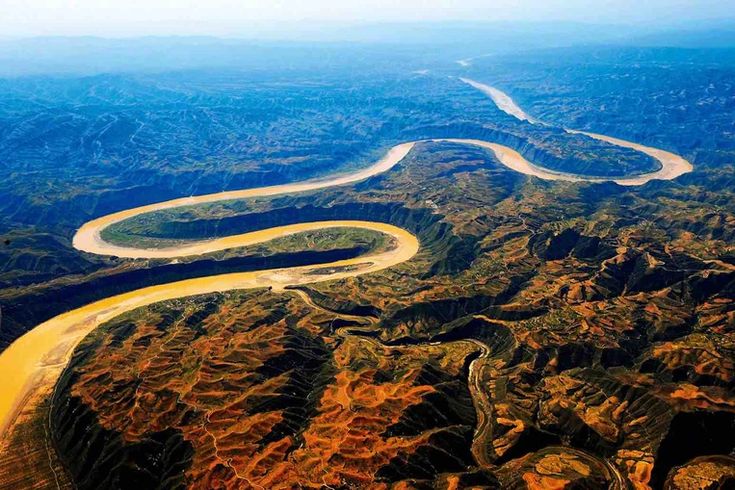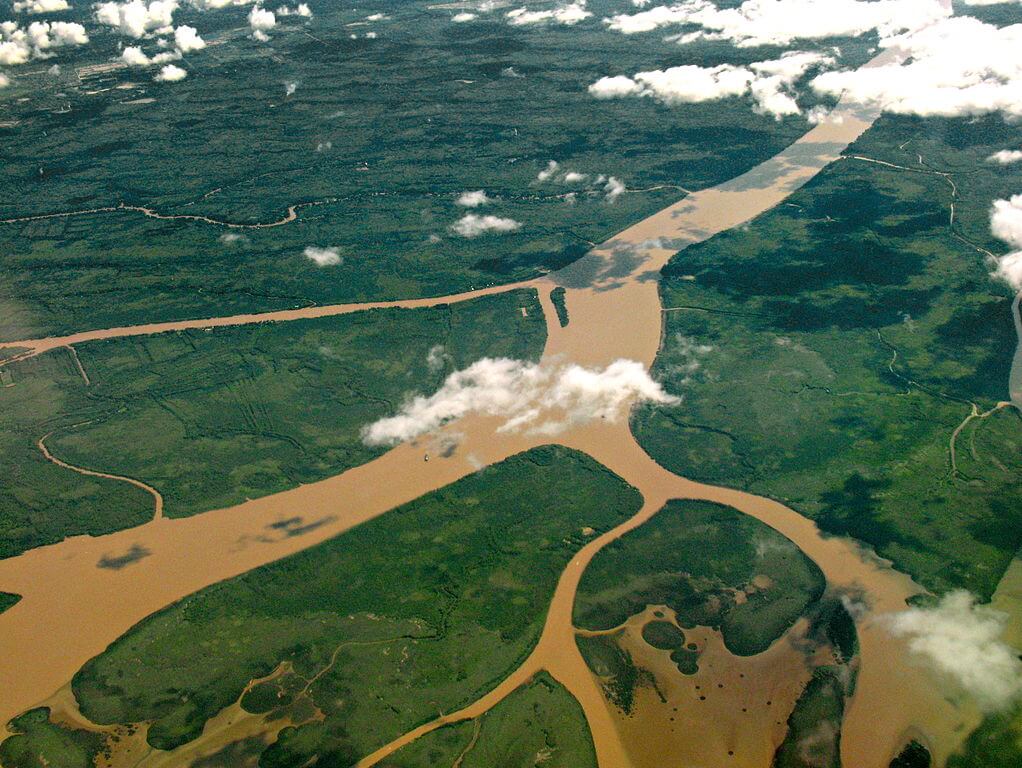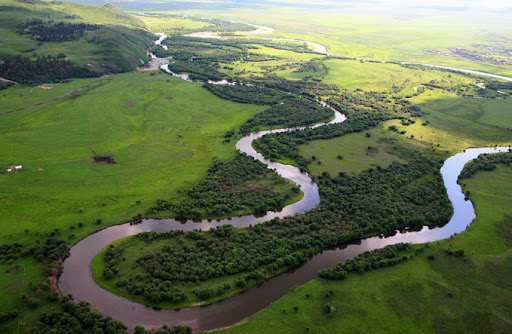Top 10 Longest Rivers in the World in 2025
By ICON TEAM | Published on Apr 14, 2025
List of Top 10 Longest Rivers in the World in 2025
Rivers are the lifeblood of civilizations, influencing economies, cultures, and landscapes all across the world. The list of the longest rivers in the world as of 2025 continues to demonstrate the diversity of the planet's topography. The top 10 longest rivers are examined below, along with their lengths, significance, and distinctive features.
1. Nile River:
The longest river in the world is the River Nile, which is roughly 6,650 kilometers (4,135 miles) long. It begins in Uganda, close to Lake Victoria, and flows north through 11 nations, including Ethiopia, Egypt, and Sudan, before emptying into the Mediterranean Sea. For thousands of years, the Nile has served as a cradle of civilization, sustaining both contemporary agricultural and ancient Egyptian society. The Blue Nile provides the majority of the water flow, while the White Nile and Blue Nile, its two principal tributaries, meet in Sudan. With continuous disagreements over water rights, especially in relation to Ethiopia's Grand Ethiopian Renaissance Dam, the Nile is still important but controversial in 2025. Although the flow of its fertile delta is threatened by climate change, millions of people still live there.
2. The Amazon River:

The Amazon River is the greatest river in terms of water volume and the second longest, measuring about 6,575 kilometers (4,086 miles). It ends in the Atlantic Ocean after starting in the Andes of Peru and flowing through Brazil, Colombia, and Peru. With millions of species, the Amazon Basin is home to the biggest rainforest in the world and is teeming with unmatched biodiversity. Despite conservation attempts to preserve its environment, the river is threatened by mining and deforestation in 2025. Indigenous communities and global climate regulation are supported by its extensive network of tributaries, which includes the Madeira and Negro. The Amazon is a natural wonder that is being examined because of its immense size and ecological significance.
3. Yangtze River:
With a length of over 6,300 kilometers (3,915 miles), the Yangtze River in China is the longest river in Asia and the third longest in the world. It rises on the Tibetan Plateau and flows through a variety of environments, including mountains and lush plains, before emptying into the East China Sea close to Shanghai. Half of China's population depends on the Yangtze, which powers hydropower, industry, and agriculture. The world's largest hydroelectric project, the Three Gorges Dam, produces enormous amounts of energy, but it has also raised environmental issues like habitat loss and seismic hazards. Even though pollution and climate change pose a threat to the river's health, it continues to be a vital component of China's economy in 2025.
4. The Mississippi River:
When combined with its Missouri River tributary, the Mississippi River, which is roughly 3,766 kilometers (2,340 miles) long, is the longest river system in North America. It drains 31 U.S. states and portions of Canada, starting with Lake Itasca in Minnesota and running south to the Gulf of Mexico. Along its banks, the Mississippi has facilitated trade, agriculture, and cross-cultural interaction, shaping American history. The river is responsible for the prominence of cities like New Orleans and St. Louis. It sustains large farmlands in 2025, but it confronts threats from pollution, flooding, and excessive industrial use, which has led to restoration attempts to protect its environment.
5. Yenisei River:
The fifth longest river is the Yenisei, which flows across Siberia in Russia and is roughly 3,445 kilometers (2,140 miles) long. Beginning in the Khangai Mountains of Mongolia, it drains into the Arctic Ocean after joining the Angara River. One of Russia's most important waterways, the Yenisei-Angara system sustains industry and hydropower in places like Krasnoyarsk. The deepest lake in the world, Lake Baikal, is part of its basin. Although the river is protected from some human impacts in 2025 due to its distant position, its pristine waters are in danger due to mining and the thawing of permafrost caused by climate change.
6. The Yellow River:

Huang He, China's Yellow River, is roughly 3,395 kilometers (2,110 miles) long. Its name comes from the silt-filled waters that give it a yellowish hue. It originates in the Qinghai-Tibet Plateau and flows eastward to the Bohai Sea. Known historically as "China's Sorrow" because of its destructive floods, the river has been subdued by contemporary levees and dams. It supports the northern plains of China, a vital agricultural area. Despite government efforts to restore the Yellow River's biological equilibrium, the river will be facing water scarcity and pollution from industrial discharge in 2025.
7. The River Ob-Irtysh:
The Ob-Irtysh system is one of Russia's major Siberian rivers, spanning approximately 3,364 kilometers (2,090 miles). Its principal tributary, the Irtysh, joins the Ob as it flows north into the Arctic Ocean after rising in China's Altai Mountains. This river system supports agriculture, energy generation, and fisheries by draining a sizable basin. Along its banks, cities like Novosibirsk flourish. The Ob-Irtysh is still vital to Russia's economy in 2025, but its flow and biodiversity are at risk because to pollution from oil companies and upstream damming in China.
8. The Plata River:

The Rio de la Plata is the largest river system in South America, spanning over 3,030 kilometers (1,882 miles) when its Paraná and Uruguay tributaries are taken into account. It starts in the highlands of Brazil, creates a huge estuary between Uruguay and Argentina, and empties into the Atlantic Ocean. The river propels trade and agriculture by supporting thriving ports like Montevideo and Buenos Aires. Navigating the Rio de la Plata becomes more difficult in 2025 due to sand accumulation and urban pollution. Its fertile basin continues to be a breadbasket for grains and soybeans, which are essential to the world's food markets.
9. The River Congo:
At over 2,920 kilometers (1,814 miles), the Congo River is the second-longest river in Africa and the deepest in the world, with sections that drop more than 220 meters. It is the source of the second-largest rainforest on Earth, the Congo Basin, which rises in the highlands of Zambia and flows through the Democratic Republic of the Congo to the Atlantic Ocean. Millions of people depend on the river for transportation, fish, and energy. Although its ecology is threatened by political unrest and illicit logging in 2025, its enormous flow second only to the Amazon makes it a key location for sustainable energy initiatives.
10. The Amur River:

A natural border between China and Russia is formed by the Amur River, which is around 2,824 kilometers (1,755 miles) long. It rises in the Khentii Mountains of Mongolia and runs east to the Sea of Okhotsk. The Amur sustains agriculture, fishing, and a variety of species, including the endangered Amur leopard. Although Russia and China are working together to manage its resources in 2025, pollution from overfishing and mining is still a problem. Among the world's major streams, the river is a hidden jewel due to its distant beauty and natural diversity.
Comments 0